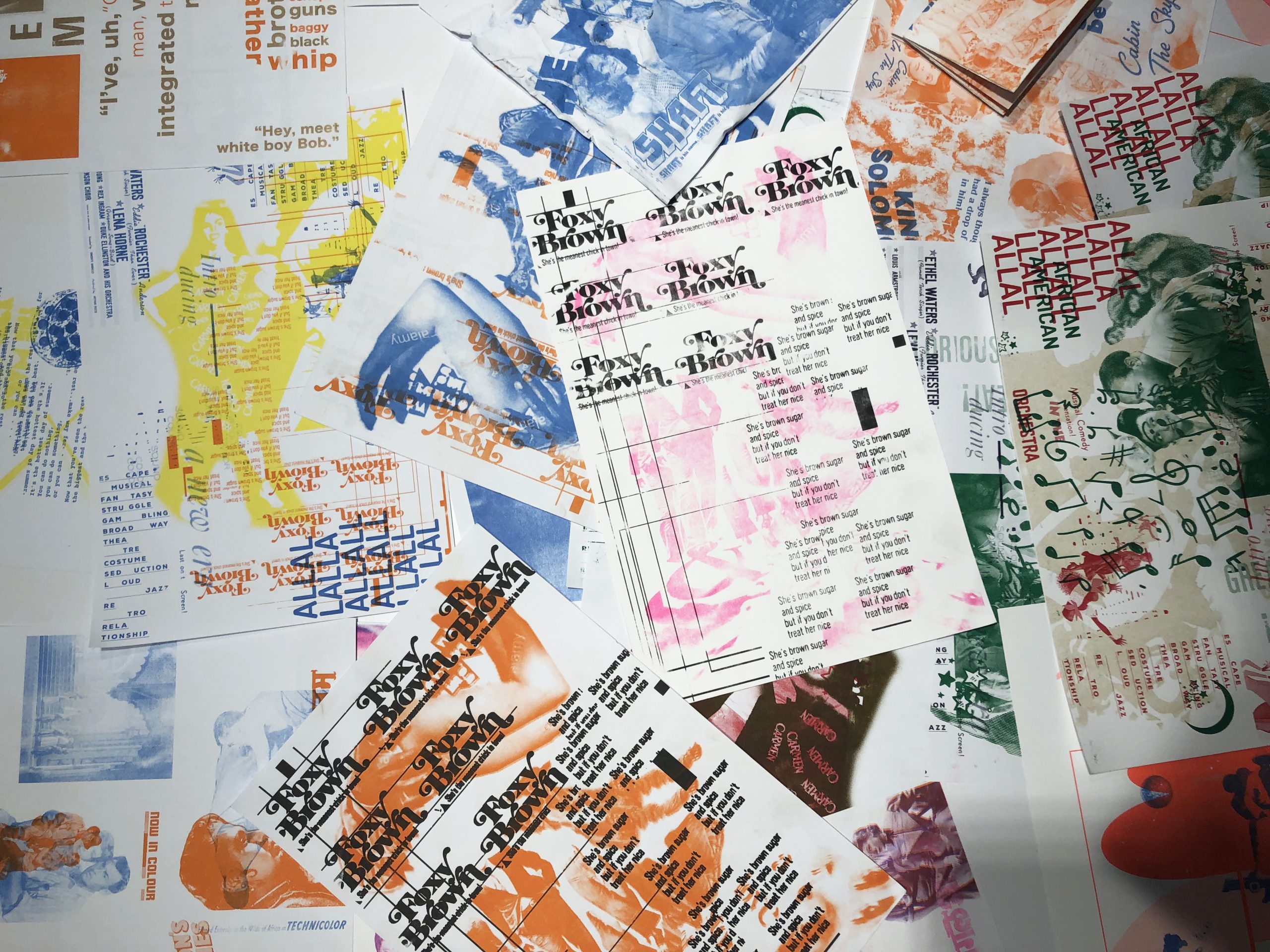
New Perspectives on Teaching Design
Kelly Walters is an Assistant Professor of Communication Design, Parsons School of Design. She is founder of Bright Polka Dot, an interdisciplinary design practice, which focuses on print, digital, exhibition and textile design. Her research investigates how socio-political frameworks and shifting technology influence the sounds, symbols and styles of black cultural vernacular in mainstream media.
In her contribution for the Swiss Grid Microsite, she asks what happens when you apply the grid to different source material? Kelly Walters works with her students to bring cultural references into the classroom in order to represent the emerging field more accurately and find new ways to challenge and manipulate the grid.
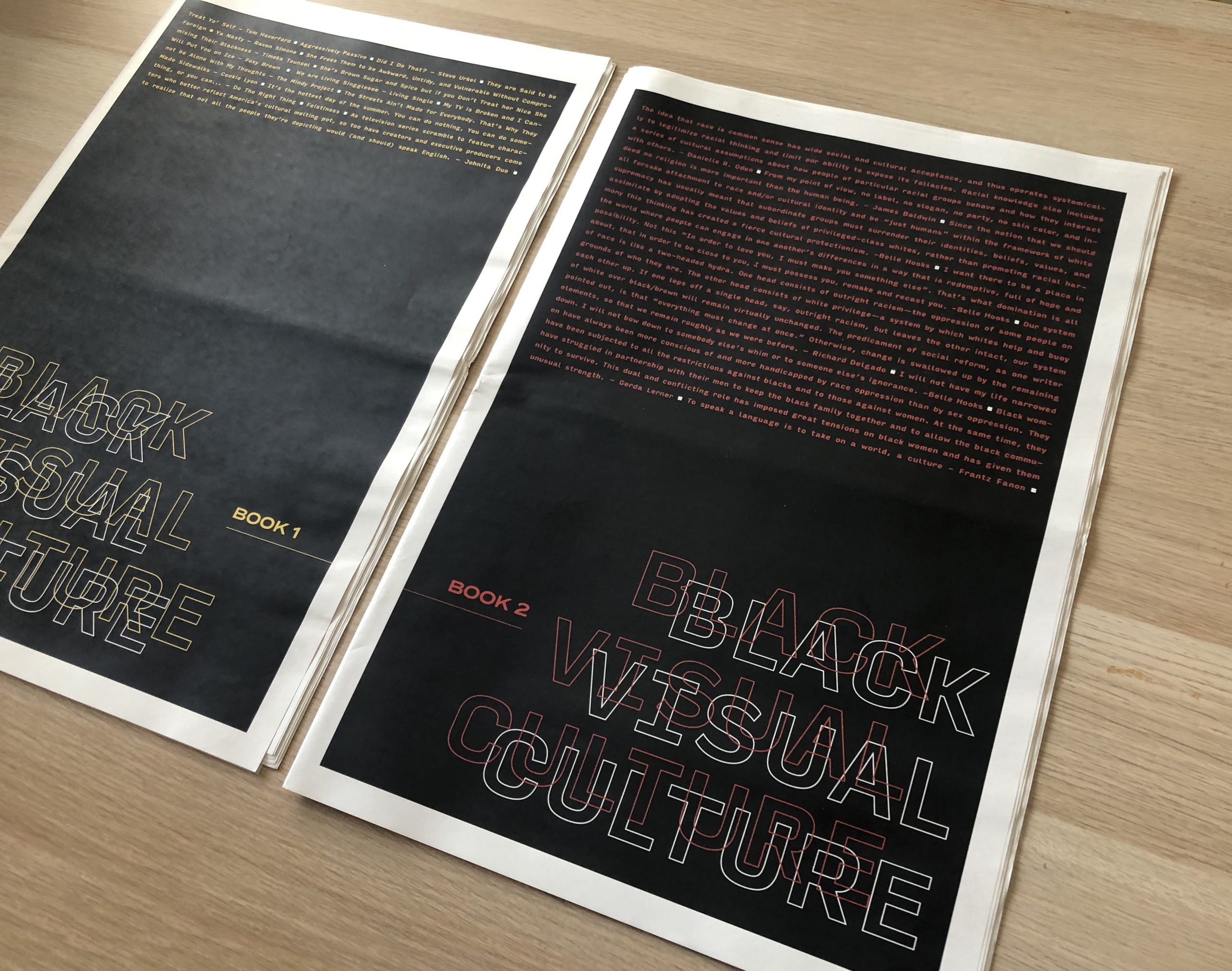
Black Visual Culture print publications, Vol. 1 and Vol. 2
In the last few years, as I’ve watched more design educators shift their curriculum to become more inclusive or engage with critical discussions around race in graphic design, I have thought deeply about the ways that this is being achieved. Often there are uncomfortable conversations about not knowing how to make this happen, what material to include in their lectures, or where to find BIPOC references. These challenges are felt at a multitude of levels, from the faculty side and from the student side, and in some instances institutional norms make the “design canon” seem predefined and unwillingly to adjust. In my own classroom, to do my part, I have explored ways that teaching design can integrate new concepts that weave learning about new technical design skills at the same time as one is able to build cultural competencies. As an extension of my design practice, I am continually working on new studio courses that engage with Black mainstream culture within the context of Communication Design. One such course that I developed in Fall 2019 was called Black Visual Culture. The focus of the course was to enable students to engage with the branding systems, set design, fashion, language and character construction of Black and Brown identities, as they appeared in popular film and television. The semester was packed with readings, questions, criticisms and a close look at images from pop culture. Throughout the term the class sought to address questions such as: What is Black? What is Brown? What images and styles are recurring on screen? What languages are used (ie. slang, code-switching, bilingual)? How can sound reinforce aspects of representation? How do we adapt our findings and references into communicable design pieces? How do we provide commentary or a point of view? How does structure or the grid factor into our designs?
Three major projects were introduced that explored different themes and subject matter. The first project, Mash-up, included the creation of risograph print zines. The prints were collaged compositions inspired by found imagery from Black film posters dating from the 1920s–1990s. The second project, On-Air, allowed students to research Black, Brown and Latinx characters from television shows dating from the 1970s–present. In On-Air students needed to conduct deeper research around the aesthetics, historic and social contexts that revolved around their selected shows. With this research, students then developed mood boards, repeated patterns and supercut videos as design responses. The third project allowed students to interview and/or find previously published interviews featuring designers that have produced work for television shows. Students were encouraged to develop work across media and explore new tools, methods, and techniques in the creation of these digital and print-based outputs.
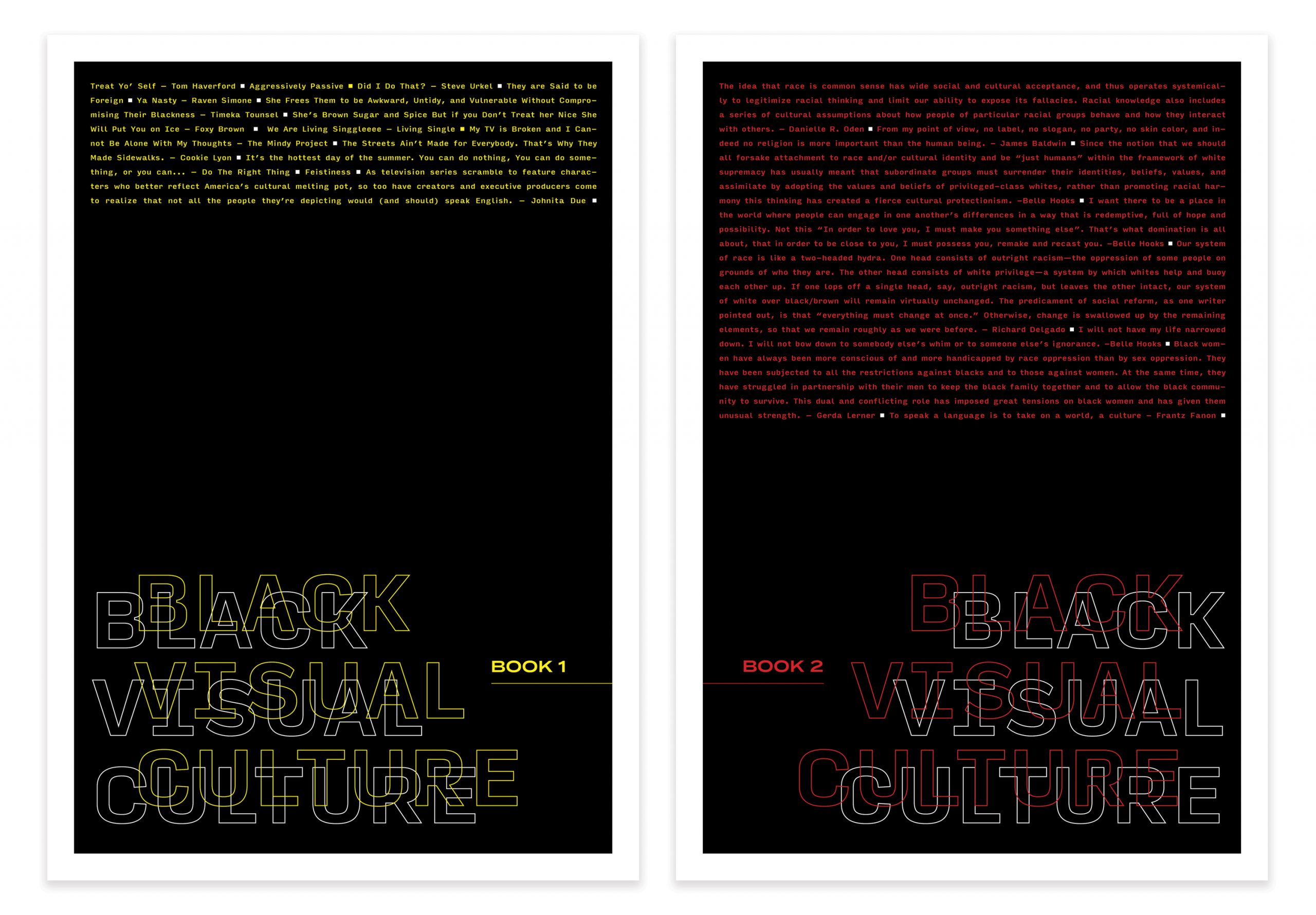
One of the major culminating projects from the Black Visual Culture class resulted in two newspaper broadside publications that featured student’s process and design work. Print Booklet 1 includes risograph prints and graphic patterns based on their research. Print Booklet 2 includes process work, interviews, image stills from supercut videos and student reflections.
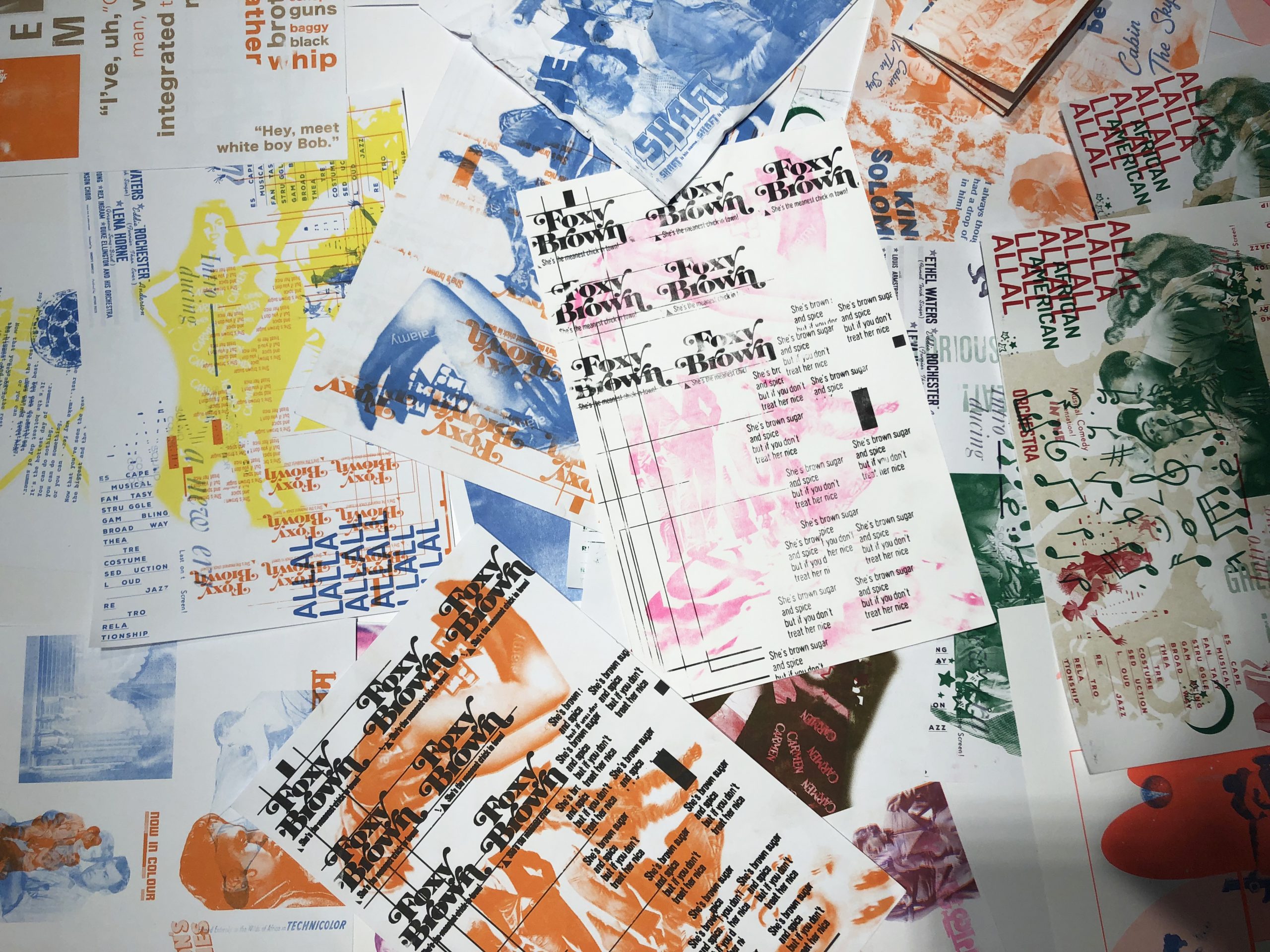
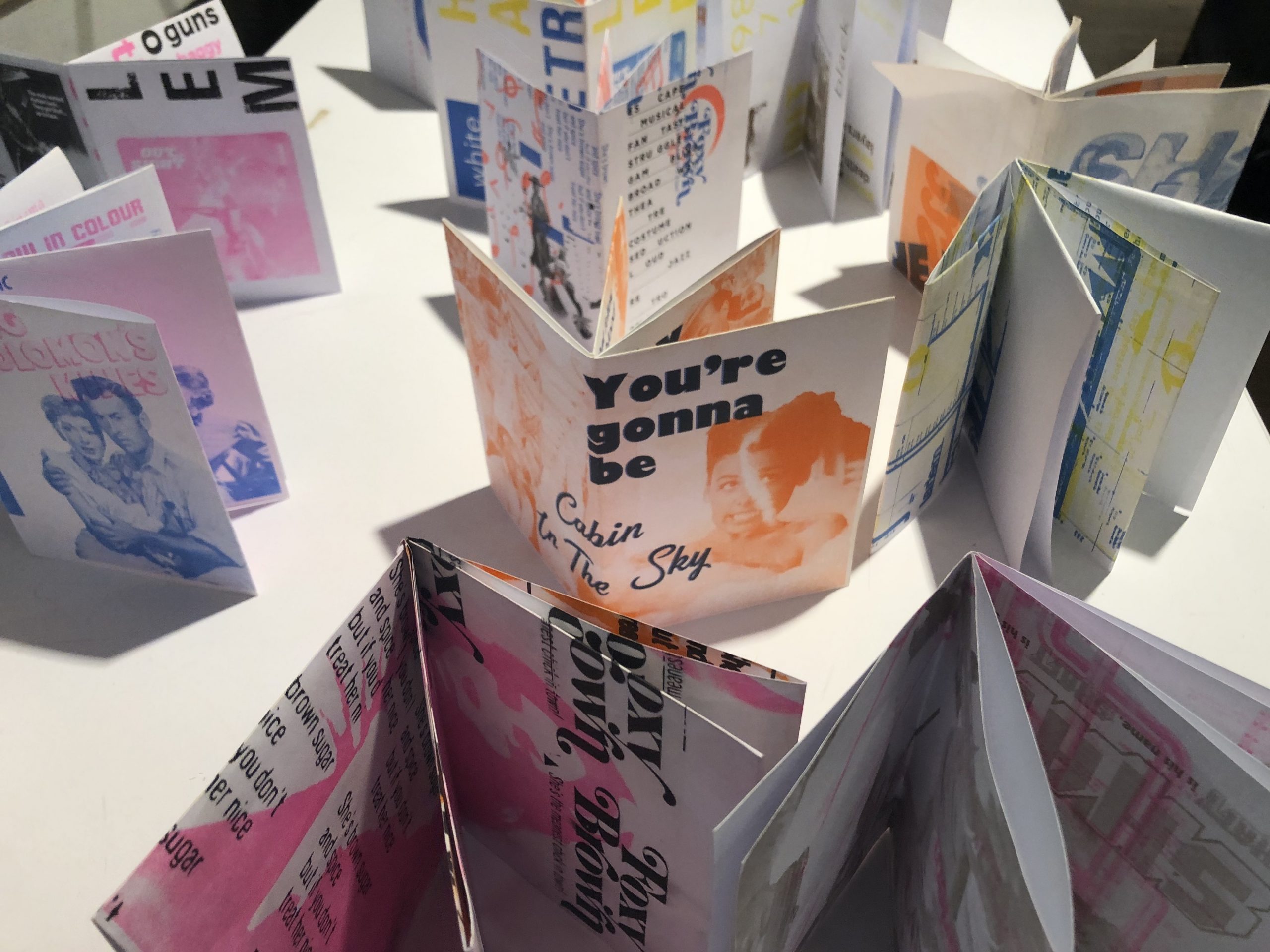
Risograph prints from the students in Black Visual Culture, Fall 2019
As I reflect on that Fall 2019 semester and approach teaching it again this Spring 2021, I am reflective of the new era in which we are living through and the impact that a class like this can have. Last Summer 2020, I connected with three students from the Fall 2019 term – Tealoni Butler, Sanika Mehta and Iman Diarra on their reflections of that class in order to learn more about insights on their process in making and how design and structure influenced the projects they made in class that semester. Below are some of their reflections:
In responding to why she took this class Sanika Mehta (BFA Communication Design, ‘20) shared,“I’d never seen a class like this at Parsons other than the class Fashion and Race by Kim Jenkins (former Parsons professor), which unfortunately I wasn’t able to take. I took her fashion and culture class and I loved it. That was the only class that to be honest, that I ever got exposed to learning about how culture and race influence design. As a person of color, I thought it was important to learn how Black people have been historically represented in terms of design aesthetics. Even though the racism experienced by Black people is very different from what we (Southeast Asian people) go through, I have still experienced racism. I grew up in a predominantly White high school and was the only Indian. I’ve gone through my own fair share of racism, and to engage in class discussions like this was something I had never done before.”
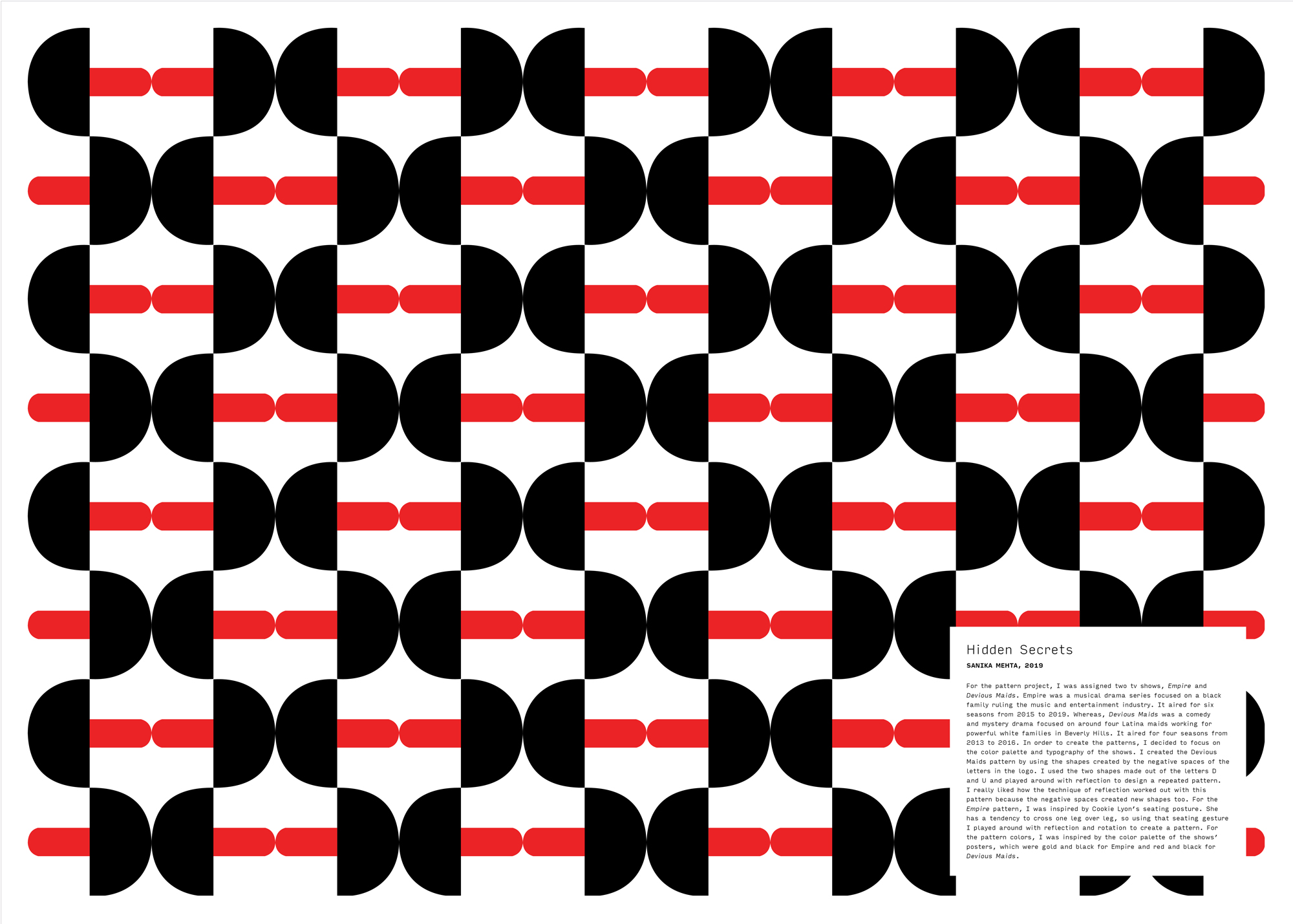
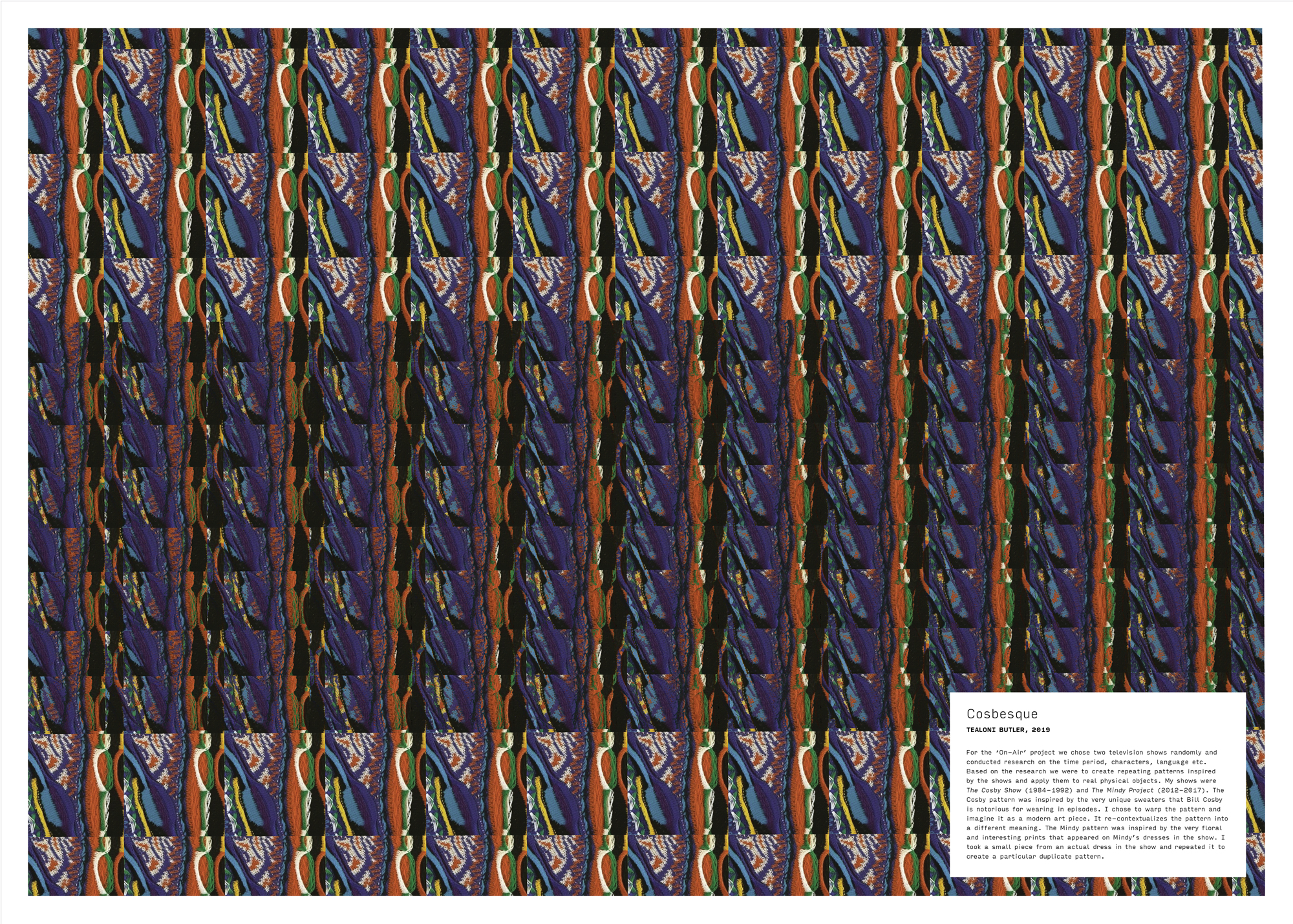
Design by Sanika Mehta entitled “Hidden Secrets,” Fall 2019 (left); Design by Tealoni Butler entitled “Cosbesque,” Fall 2019 (right).
Tealoni Butler (BFA Photography, ‘21) reflected on her experience by stating, “Without even knowing that this course was technically for Communication Design majors, I immediately jumped on registering just by hearing the title Black Visual Culture. As the only Black woman filmmaker/photographer in my entire year (BFA Photography), I have yearned for spaces where I can reflect on my position and how my race is represented in various media. A class about Black culture and Black visuality at Parsons?? I never thought I would see or even have a chance to experience this or even have weekly discussions on the topics at school. Prior to this course, any research on these matters have been done independently. This course pushed me outside of my comfort zone when I realized I would have to create work in mediums that I never really explored before. To be uncomfortable signals growth and I definitely believe I have grown as an artist as a result of taking this class. Each project assigned has been very enriching and connected to a lot of the personal work I have made [that] semester. Project 1 is where I researched and created a zine movie poster based on combining two early Black cinema movies. Blending elements from two different films can really communicate and magnify things differently. This project also introduced me to the risograph printer which I plan to use in the future. Project 2 I would say is where I really had to think outside of my normal box in creating textile patterns for clothes and objects. I enjoyed the research process and creating the moodboards for the individual TV shows.”
Iman Diarra (MFA Design & Technology, ‘20) also reflects saying, “I chose to take Black Visual Culture as a space where I could explore the intersection of Blackness – as a collective experience, but also as my own – and media design. Until [that] year, my knowledge of African-American culture was based on what “made it across the ocean, and into the French curriculum.” Studying Black culture across American media in the past century – from persistent themes (such as the different stereotypical tropes among African-American film characters) to pivotal media culture moments (e.g. Blaxploitation movement) enriched my understanding of a part-shared part-different culture. Our class conversations weren’t centered around Blackness exclusively. We explored similar questions across the LatinX, Indian and North-African communities as well, which helped me realize how oblivious we can be to racial struggle that is not our own until it is flat-out pointed at to us. One of the documentaries we watched about the depiction of the Latinx community in American TV pointed at film and TV works I had been exposed to growing up, and hadn’t fully grasped all the racial semantics of previously. I got to reflect – internalize, rationalize, debate, discuss thought-provoking content and interpretations as part of an eclectic group with a shared interest in Black culture. I was also challenged in my craft. As a user experience designer by trade exploring design across different technologies, I got to seriously bend my creative mind in new ways. I had a lot of firsts in this class – poster, supercut video and pattern creation – where I initially struggled between “I’ve never done this before and creating in this new way is disorienting” and “I’d love for this to result in something I’m genuinely proud of”. Turns out it did, and going through the nerve-wracking part of the process desensitized me that much more to the never-done-this-before-tension. This class gave me space to connect, exchange and create with my community at the intersections of Blackness and design, and that felt good. It felt refreshing. Challenge, expansion and connection.”
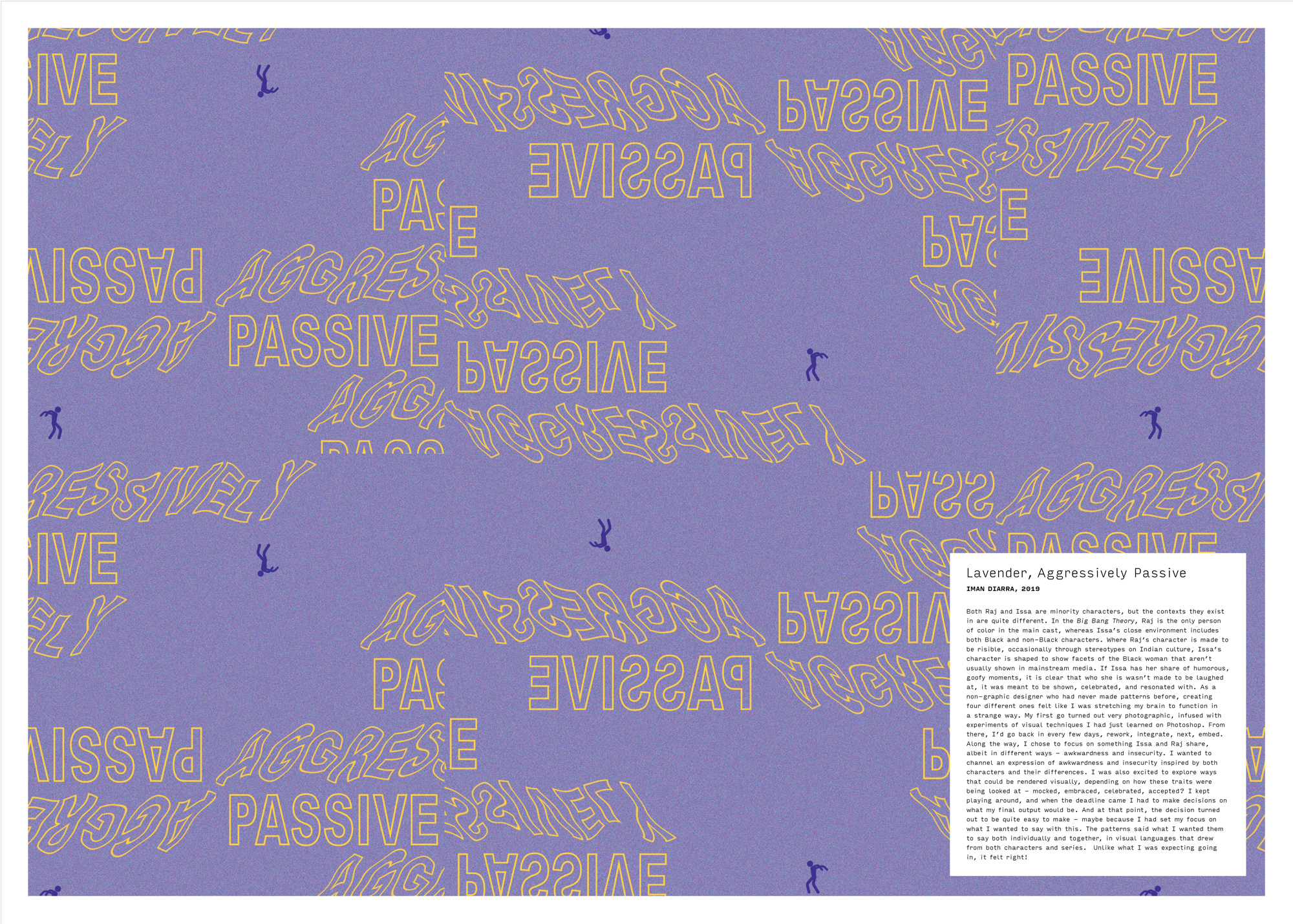
Design by Iman Diarra entitled “Aggressively Passive,” Fall 2019
Tealoni, Sanika and Iman bring to light uniquely different perspectives as women of color but also as designers navigating identity inside of design practice. New perspectives on teaching design should be able to fold in design and race without having it become a “separate class” or held in a different “art history course” but through embedding it within design practice. Studio-based projects allow for students to think through critical race theory while also making a video, a pattern or the creation of a poster for example. I argue beyond written essays, we should create opportunities for thinking through active making. These projects have the capacity to deepen students’ ability to look closely and become more open to engaging in harder uncomfortable conversations about race.
To see more work from this course check out @blackvisualculture on Instagram.
